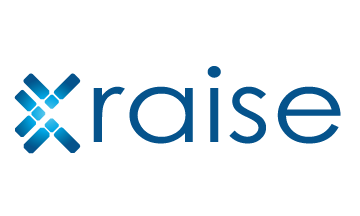Status Epilepticus (SE)
Committed to changing the treatment paradigm for patients with status epilepticus.
At Marinus, we are developing an intravenous (IV) formulation of ganaxolone for use in the hospital setting, aimed to offer a potential new treatment option for patients with status epilepticus who continue to experience ongoing seizures despite the current standard of care.
What is Status Epilepticus?
Status epilepticus is a life-threatening condition resulting from either the failure of the mechanisms responsible for seizure termination or from the initiation of mechanisms which lead to abnormally prolonged seizures. Status epilepticus is the second most common neurological emergency in the U.S. and is associated with significant mortality and morbidity.
Learn about Keith and Amanda’s status epilepticus journey
It has been estimated that up to 150,000 cases of SE occur annually in the U.S.
The Science Behind Treating Status Epilepticus
Seizures persist when neuronal networks are over-excited. GABAergic signaling aims to inhibit, or calm, these networks during ongoing or impending seizures. A decline in GABAA receptor-mediated inhibition is one of the proposed mechanisms by which status epilepticus begins and becomes self-sustained. As seizures progress, synaptic GABAA receptor availability declines through receptor internalization, which in some cases may lead to resistance to first-line benzodiazepines that primarily act at synaptic GABAA receptors.
In contrast, extrasynaptic GABAA receptors remain available despite ongoing seizure activity and are a potential drug target for the management of status epilepticus.
Ganaxolone is a neuroactive steroid anticonvulsant with a differentiated pharmacological profile to other antiseizure medications used in the treatment of status epilepticus. It works by modulating both synaptic and extrasynaptic GABAA receptors via a unique binding site to potentiate two types of inhibitory signaling.

Desired Rapid Onset
The goal for status epilepticus treatment is to rapidly control the seizures. Intravenous (IV) ganaxolone has pharmacokinetic and pharmacodynamic properties suited for the potential treatment of status epilepticus because it has been found in pre-clinical and clinical studies to act on the neuronal networks within minutes.
IV ganaxolone allows for rapid administration in emergency situations, achieving concentrations that have the potential to quickly cease ongoing seizures. IV ganaxolone has received orphan drug designation from the U.S. Food and Drug Administration for the potential treatment of status epilepticus.
Clinical Development in Status Epilepticus
Building on Marinus’ Phase 2 trial in refractory status epilepticus (Vaitkevicius et al., 2022), we are committed to investigating the potential of IV ganaxolone for patients with status epilepticus.

RAISE Phase 3 Trial
Study in refractory status epilepticus
RAISE (NCT04391569) is a Phase 3 randomized, placebo-controlled trial to evaluate the safety and efficacy of IV ganaxolone for the treatment of refractory status epilepticus.
More information about Marinus’ clinical trials can be found on ClinicalTrials.gov

Status Epilepticus Resources
Below are additional resources and information about status epilepticus:
American Epilepsy Society (AES)
Evidence-Based Guideline: Treatment of Convulsive Status Epilepticus in Children and Adults: Report of the Guideline Committee of the American Epilepsy Society
Guideline for Treatment of Prolonged Seizures in Children and Adults
A Treatment Algorithm that Comprises Three Phases of Treatment
Treatment of Refractory Convulsive Status Epilepticus: A Comprehensive Review by the American Epilepsy Society Treatments Committee
Neurocritical Care Society (NCS)
Guidelines for the Evaluation and Management of Status Epilepticus
European Federation of Neurological Sciences
EFNS guideline on the management of status epilepticus in adults
International League Against Epilepsy (ILAE)
Status Epilepticus resources
London-Innsbruck Colloquium
Salzburg Consensus Criteria for Non-Convulsive Status Epilepticus–approach to clinical application
Epilepsy Foundation
Status Epilepticus
Seizure First Aid Training and Certification
Centers for Disease Control and Prevention (CDC)
Epilepsy
Marinus’ Scientific Affairs has published these links to ensure that health care providers have access to scientifically sound and technically accurate information about status epilepticus treatment, but this list is not all encompassing. Links to third party sites are provided for convenience purposes only. The information contained on these sites is not information provided, controlled or monitored by Marinus Pharmaceuticals in any way. Marinus Pharmaceuticals is not responsible in any way for the accuracy, completeness, or fitness for any particular purpose of any content appearing on such sites.
Scientific Publications on Status Epilepticus
In our passion to constantly innovate to help improve the lives of people affected by seizure disorders, we encourage our colleagues to publish their research in leading scientific journals. Click here to learn more.
Questions for our Scientific Affairs team?
Marinus News
Stay up-to-date with the latest press releases and statements issued by Marinus about our work in status epilepticus.
References:
- Trinka E, Cock H, Hesdorffer D, et al. A definition and classification of status epilepticus: report of the ILAE task force on classification of status epilepticus. Epilepsia. 2015; 56: 1515-1523.
- Paris M, Reddy U. Update on the management of status epilepticus. Anesthesia and Intensive Care Medicine 2021; 22(2): 85-88
- Glauser T, Shinnar S, Gloss D, et al. Evidence-based guideline: treatment of convulsive status epilepticus in children and adults: report of the guideline committee of the American epilepsy society. Epilepsy Curr 2016; 16(1): 48-61
- Goodkin HP, Joshi S, Mtchedlishvili Z, et al. Subunit-specific trafficking of GABAA receptors during status epilepticus. J Neurosci 2008; 28(10): 2527-2538
- Jacob TC, Moss SJ, Jurd R. GABAA receptor trafficking and its role in the dynamic modulation of neuronal inhibition. Nat Rev Neurosci 2008; 9: 331-343
- Treiman DM. GABAergic mechanisms in epilepsy. Epilepsia 2001; 42(Suppl 3): 8-12
- Brophy GM, Bell R, Claassen J, et al. Guidelines for the evaluation and management of status epilepticus. Neurocrit Care 2012; 17(1): 3-23
- Reddy DS, Estes WA. Clinical potential of Neurosteroids for CNS disorders. Trends in Pharmacol Sci 2016; 37(7): 543-561
- Falco-Walter JJ, Bleck T. Treatment of established status epilepticus. J Clin Med 2016; 5(4): 1-8
- Vaitkevicius H, Ramsay RE, Swisher CB, Husain AM, Aimetti A, Gasior M. Intravenous Ganaxolone for the treatment of status epilepticus: results from an open-label, dose-finding, phase 2 trial. Epilepsia. Published Online June 24, 2022. doi: 10.1111/epi.17343